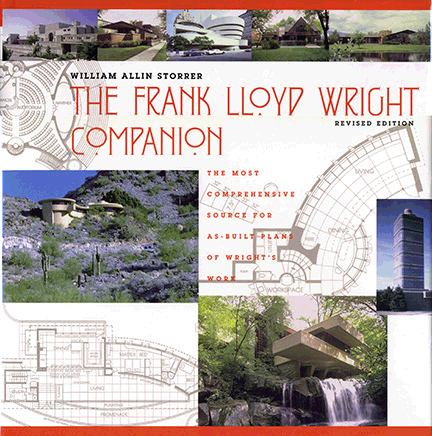
Page 2

|
a supplement to the printed FLlW UPDATE, this update 21 March 2018 All items in this website © copyright 2018 W A Storrer |
To return to the main page, CLICK HERE. To go to Page 3, CLICK HERE.
This is the ONLY independent, unbiased source of information on the world's greatest architect, Frank Lloyd Wright, and his work.
This page updated 21 March 2018
|
|

|
of informatio
 |
n on the world's greatest architect, Frank Lloyd Wright, and his work.
|
|
|
What is art? What is art in architecture, and why is the presentation of Frank Lloyd Wright to the public failing? Somewhere around the turn of the century (19th to 20th) Joseph Conrad wrote that art is "a single-minded effort to render the highest kind of justice to the visible universe." Wright did that in his architectural designs. His was not a company, but a single mind. Yes, occasionally he worked with other great minds, but they had to satisfy his idea. That idea was of a whole, an entire environment, from outside to inside including its furnishings. Yet Wright-based institutions, notably the bookstores attached to Wright sites, market Wright in parts, thus shouting to the visiting public that Wright's ethos was wrong. Instead of marketing a few, well-chosen books that present Wright's work or his life in the inspirational beauty they represent, the biggest Wright bookstores market anything with the name Wright on the cover, even books filled with incorrect or incomplete information about Wright (Many Masks), his work (The Frank Lloyd Wright Encyclopedia) or books that are now outmoded (Hitchcock's In the Nature of Materials which, however much it was the standard reference in 1940, now presents but one-sixth of Wright's built work). |
This is the ONLY independant, unbiased source of information on the wrld's greatest architect, Frank Lloyd Wright, and his work.
|